
Code: 08287345
Theoretical and Numerical Investigation of Radiative Extinction of Diffusion Flames
by Anjan Ray
The influence of soot radiation on diffusion flames was investigated using both analytical and numerical techniques. Soot generated in diffusion flames dominate the flame radiation over gaseous combustion products and can signific ... more
- Language:
 English
English - Binding: Paperback
- Number of pages: 224
Publisher: Biblioscholar, 2013
- More about this

You might also like
-

Narrative of a Journey Into Persia, and Residence at Teheran; Containing a Descriptive Itinerary from Constantinople to the Persian Capital, Also a Va
44.99 € -
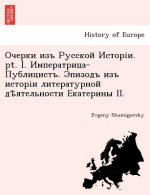
. PT. I. - . II.
19.35 € -3 % -

Ivory Pyramid
17.70 € -

Homeopathic Treatment For Sexual Disorders and Infertility
38.60 € -

EU Climate Change Policy
153.83 € -10 %
Give this book as a present today
- Order book and choose Gift Order.
- We will send you book gift voucher at once. You can give it out to anyone.
- Book will be send to donee, nothing more to care about.
More about Theoretical and Numerical Investigation of Radiative Extinction of Diffusion Flames
You get 172 loyalty points
 Book synopsis
Book synopsis
The influence of soot radiation on diffusion flames was investigated using both analytical and numerical techniques. Soot generated in diffusion flames dominate the flame radiation over gaseous combustion products and can significantly lower the temperature of the flame. In low gravity situations there can be significant accumulation of soot and combustion products in the vicinity of the primary reaction zone owing to the absence of any convective buoyant flow. Such situations may result in substantial suppression of chemical activities in a flame, and the possibility of a radiative extinction may also be anticipated. The purpose of this work was to not only investigate the possibility of radiative extinction of a diffusion flame but also to qualitatively and quantitatively analyze the influence of soot radiation on a diffusion flame. In this study, first a hypothetical radiative loss profile of the form of a sech(sup 2) was assumed to influence a pure diffusion flame. It was observed that the reaction zone can, under certain circumstances, move through the radiative loss zone and locate itself on the fuel side of the loss zone contrary to our initial postulate. On increasing the intensity and/or width of the loss zone it was possible to extinguish the flame, and extinction plots were generated. In the presence of a convective flow, however, the movement of the temperature and reaction rate peaks indicated that the flame behavior is more complicated compared to a pure diffusional flame. A comprehensive model of soot formation, oxidation and radiation was used in a more involved analysis. The soot model of Syed, Stewart and Moss was used for soot nucleation and growth and the model of Nagle and Strickland-Constable was used for soot oxidation. The soot radiation was considered in the optically thin limit. An analysis of the flame structure revealed that the radiative loss term is countered both by the reaction term and the diffusion term.
 Book details
Book details
Book category Knihy po anglicky Society & social sciences Education
69.91 €
- Full title: Theoretical and Numerical Investigation of Radiative Extinction of Diffusion Flames
- Author: Anjan Ray
- Language:
 English
English - Binding: Paperback
- Number of pages: 224
- EAN: 9781288915521
- ISBN: 9781288915521
- ID: 08287345
- Publisher: Biblioscholar
- Weight: 408 g
- Dimensions: 246 × 189 × 12 mm
- Date of publishing: 01. March 2013
Trending among others
-

Oxford IB Diploma Programme: IB Economics Course Book
62.29 € -
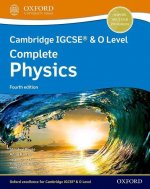
Cambridge IGCSE (R) & O Level Complete Physics: Student Book Fourth Edition
38.81 € -

Cambridge IGCSE (R) & O Level Complete Chemistry: Student Book Fourth Edition
42.52 € -

Physics for You
53.23 € -

Business Partner B1+ Workbook
16.98 € -4 % -

Speed and Accuracy: Multiplication
8.64 € -

Powerful Teaching: Unleash the Science of Learning
28.92 € -20 % -

Speed and Accuracy: Division
8.64 € -

Read Write Inc. Phonics: Red Ditty Book Bag Books (Mixed Pack of 10)
79.59 € -

Dancing Heads
15.74 € -4 % -
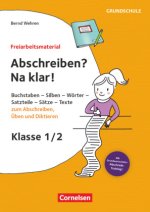
Freiarbeitsmaterial für die Grundschule - Deutsch - Klasse 1/2
25.84 € -

Business Partner B1 Workbook
17.60 € -10 % -

Business Partner B2 Workbook
16.98 € -4 % -

Blue Book of Grammar and Punctuation: An Easy- to-Use Guide with Clear Rules, Real-World Examples , and Reproducible Quizzes, Twelfth Edition
17.08 € -20 % -

OET Preparation
10.49 € -

KS3 Maths 10-Minute Weekly Workouts - Year 7
8.12 € -9 % -

OET Reading Subtest Preparation
12.86 € -7 % -

Grade 9-1 GCSE Maths AQA Revision Question Cards - Higher
10.80 € -
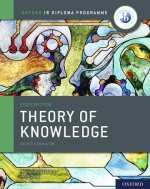
Oxford IB Diploma Programme: IB Theory of Knowledge Course Book
57.96 € -

Positive Discipline Tools for Teachers
18.42 € -6 % -

Embodied Teen
21.82 € -17 % -
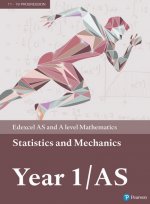
Pearson Edexcel AS and A level Mathematics Statistics & Mechanics Year 1/AS Textbook + e-book
19.04 € -

(ISC) SSCP SG & SSCP Practice Test Kit, 3e
71.04 € -23 % -

Motivation and Reinforcement
47.25 € -

Pearson Edexcel International GCSE (9-1) English Language B Student Book
54.05 € -

Imagine If...
11.01 € -24 % -

Vertical Academy
37.47 € -

Oxford International Primary Maths Second Edition: Practice Book 1
13.17 € -

Vol 2 Blackletter Lettering Adventures
27.17 € -
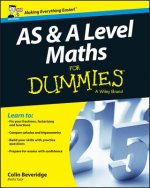
AS & A Level Maths For Dummies
19.76 € -19 % -
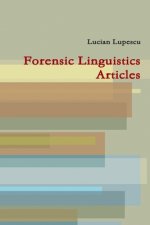
Forensic Linguistics Articles
17.70 € -

CompTIA Security+ Review Guide - Exam SY0-601
26.56 € -20 % -

Abolition of Man
19.97 € -
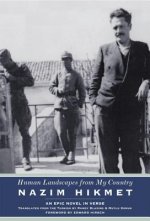
Human Landscapes from My Country
28.20 € -4 % -
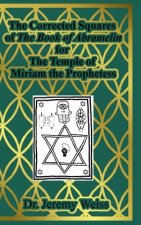
Corrected Squares of The Book of Abramelin
615.55 € -

Hanbo Jutsu: Use of Hanbo, Cane and Walking Stick for Self Defense
11.83 € -

Reading Mind - A Cognitive Approach to Understanding How the Mind Reads
24.19 € -20 % -

KS3 Maths 10-Minute Weekly Workouts - Year 8
8.12 € -9 % -

Exam Prep for Microeconomics by Pindyck & Rubinfeld, 6th Ed.
46.02 € -

North Korea's Military Threat
29.65 € -
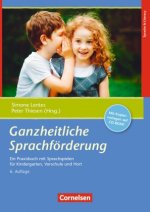
Ganzheitliche Sprachförderung
32.84 € -

English Language & Literature WORKBOOK: York Notes for GCSE (9-1)
9.67 € -4 % -

Release Your Inner Drive
16.36 € -13 % -

Effect of Registration Errors on Tracking in a Networked Radar System
69.91 € -

Princeton Review SAT Premium Prep, 2021
46.12 € -

CEH v11 Certified Ethical Hacker Study Guide + Practice Tests Set
76.19 € -5 % -

10 Practice Tests for the SAT, 2021 Edition
34.18 € -
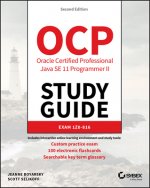
OCP Oracle Certified Professional Java SE 11 Programmer II Study Guide - Exam 1Z0-816 and Exam 1Z0-817
49.93 € -6 % -

Prepared
33.97 €
Osobný odber Bratislava a 2642 dalších
Copyright ©2008-24 najlacnejsie-knihy.sk Všetky práva vyhradenéSúkromieCookies



 21 miliónov titulov
21 miliónov titulov Vrátenie do mesiaca
Vrátenie do mesiaca 02/210 210 99 (8-15.30h)
02/210 210 99 (8-15.30h)